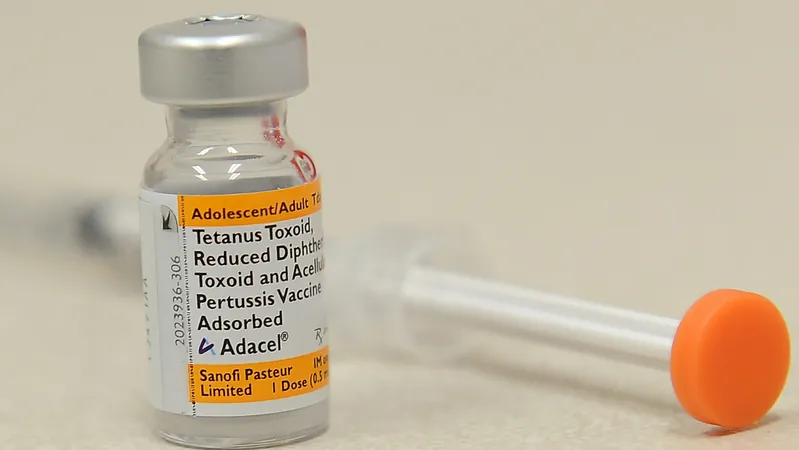
Whooping Cough Cases Surge in 2024, Returning to Pre-Pandemic Levels: What You Need to Know
2024-10-14
Author: Wei
Surge in Cases Observed
In a concerning health announcement, the Centers for Disease Control and Prevention (CDC) has revealed a dramatic spike in whooping cough (pertussis) cases this year, aligning closely with levels seen before the pandemic. As of early October 2024, more than five times the number of cases have been reported compared to the same period in 2023, signaling a significant uptick in this infectious disease.
According to the CDC's report, a staggering 17,579 cases of whooping cough have been documented in the U.S. through the week of October 5, compared to only 3,962 cases during the same timeframe last year. This marks an increase of over 13,600 reported cases, raising alarms about a potential public health crisis.
Risk to Infants
Whooping cough, caused by the bacterium *Bordetella pertussis*, poses a severe risk, particularly to infants under one year old, who are at greater risk of serious illness or death due to their immature immune systems. The CDC noted, “This age group continues to have the highest reported rate of pertussis.”
Healthcare Preparedness
The surge in cases comes after various local health departments issued advisories earlier this year about rising whooping cough incidents, signaling that healthcare systems may need to prepare for a larger influx of patients.
Is Vaccination Enough?
The CDC emphasizes the importance of vaccination as the best defense against whooping cough. Although vaccines effectively reduce the chances of severe infection, the agency warns that immunity can diminish over time, making even vaccinated individuals susceptible. They recommend vaccinations for all age groups to help combat the disease.
Spotting the Symptoms
Identifying whooping cough can be tricky, as initial symptoms often mimic those of a common cold. Typically, symptoms develop 5 to 10 days after exposure, with some cases taking up to three weeks to manifest.
Early signs include: - Runny nose - Low-grade fever (below 100.4°F) - Mild, occasional cough
In severe cases, especially in infants, symptoms can escalate to life-threatening pauses in breathing, known as apnea, which may cause a bluish tint in the baby's skin.
As the disease progresses, individuals may experience: - Intense, violent coughing bouts that can lead to a characteristic "whoop" sound when inhaling - Coughing fits that may last several weeks, with some cases stretching to a grueling 10 weeks or longer
Adults and teenagers can also suffer from complications like pneumonia, particularly if they were not vaccinated.
A Historical Perspective on Whooping Cough
Historically, cases of whooping cough began to rise steadily in the 1980s, reaching a peak of 48,277 cases in 2012. Although reports dipped during the COVID-19 pandemic, the CDC believes recent increases may result from several factors, including: - Enhanced awareness and diagnosis by healthcare providers - Improved access to laboratory testing - Increased surveillance and public health reporting - Waning immunity from previous vaccinations
Interestingly, the CDC suggests that COVID-19 mitigation measures, such as mask-wearing and social distancing, may have inadvertently reduced the transmission of whooping cough.
As we witness this resurgence, it becomes essential for communities to remain vigilant and prioritize vaccination efforts to protect vulnerable populations—especially infants—against this potentially deadly disease. Always consult healthcare professionals for advice on vaccinations and be alert to the symptoms in your family and community.



 Brasil (PT)
Brasil (PT)
 Canada (EN)
Canada (EN)
 Chile (ES)
Chile (ES)
 España (ES)
España (ES)
 France (FR)
France (FR)
 Hong Kong (EN)
Hong Kong (EN)
 Italia (IT)
Italia (IT)
 日本 (JA)
日本 (JA)
 Magyarország (HU)
Magyarország (HU)
 Norge (NO)
Norge (NO)
 Polska (PL)
Polska (PL)
 Schweiz (DE)
Schweiz (DE)
 Singapore (EN)
Singapore (EN)
 Sverige (SV)
Sverige (SV)
 Suomi (FI)
Suomi (FI)
 Türkiye (TR)
Türkiye (TR)